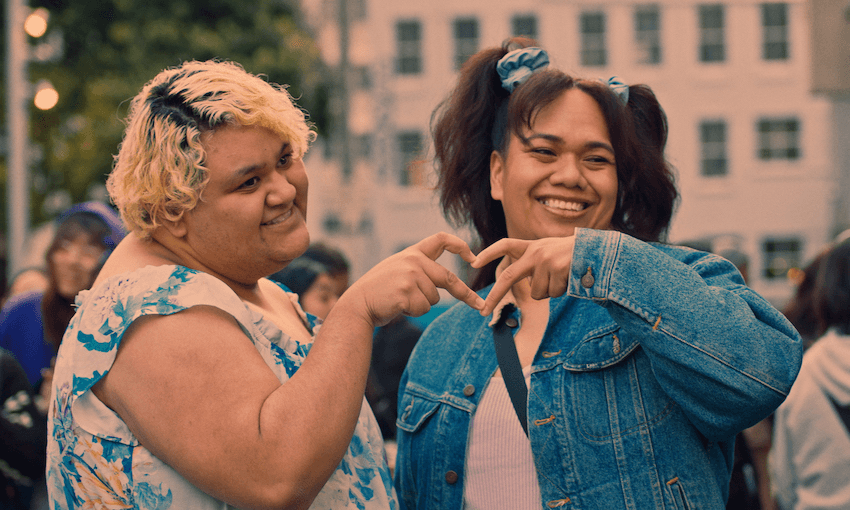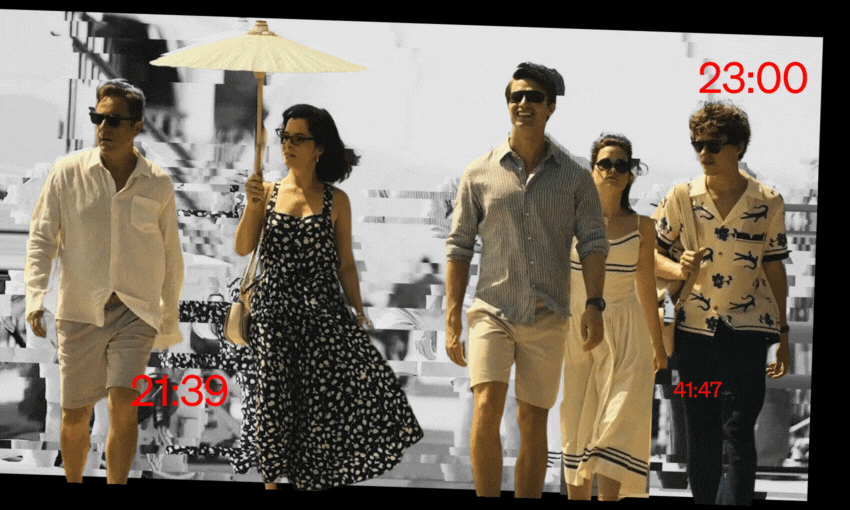Korean pop music and Pacific cultures may not sound like an instant match, but they’re both all about community.
Well over a decade ago, a few of my Pacific friends told me they were going to teach in South Korea. At the time, it seemed the most natural thing in the world given their interest in Asian cultures. What also seemed natural was our shared love for K-Pop. We were all in Ōtautahi Christchurch and attended or worked at the University of Canterbury which is where my love for K-Pop really grew.
You might be thinking a couple of things. 1) There are Pacific K-Pop fans? And 2) in Christchurch? Really?
Both are valid observations but hear me out – there are certain phenomena occurring beneath the surface/on the edges/in the margins/between the lines that largely go unnoticed until something big happens that thrusts them into the spotlight. One such phenomena was a dedicated K-Pop fan base in Aotearoa and that ‘”something big” for K-Pop was probably PSY’s 2012 hit ‘Gangnam Style’.
But while it’s tempting to attribute much of K-Pop’s current popularity to the forces of globalisation and consumer capitalism (all that serious stuff), a deeper dive would reveal a more nuanced picture. Such a picture might include recognising South Korea’s rapid development over the past 70 years, and the government’s investment into the country’s creative industries in the 1990s, which laid the foundations for K-Pop as we know it today.
Then we have other parts of the picture – Seo Taiji and Boys, the “Big 3” entertainment companies, the different generations of K-Pop (FYI we’re in the 4th generation now #iloveNewjeans), the role of digital technologies in disseminating popular culture, the scandals (there’s always a dark side) and of course, the fans.
The Hallyu Wave, which is the term given to the increasing popularity of Korean culture around the world, began in the early 2000s when a k-drama, Winter Sonata, became super popular in Japan. The Hallyu Wave is recognised as having first diffused regionally to Japan and China, then to Southeast Asia before spreading to the rest of the world. While earlier iterations of the Wave were industry-driven, this current iteration is more fan-driven.
How do we fit into all of this though? Given our geographical distance from South Korea, you’d think that K-Pop got here much later in comparison to places like the Philippines or Vietnam. However, those underground flows of Korean popular culture reached our shores sooner than you might have expected. And this is due to a combination of several factors, namely strong relations between the Republic of Korea and New Zealand (diplomatic, historical, trade and so forth), New Zealanders teaching English or working in South Korea, people to people linkages ie. Koreans migrating to Aotearoa, Korean exchange students and earlier flows of culture from Asia.
Those earlier flows of culture are not only limited to anime being part of our cartoon diet in the 90s (RIP Akira Toriyama), those classmates in intermediate who were huge J-POP fans or your gamer brothers. In my research, which looks at Pacific K-Pop fans in Aotearoa, other instances of consumption and engagement enabled exposure to Asian popular culture early on. Anecdotally, I know that many Pacific peoples watched martial arts movies, Filipino dramas, and Bollywood cinema – and even in the islands, from as early as the 1970s! (I feel like I’ve vicariously watched Gulong ng Palad and Sa Piling Mo through friends and extended family lol.)
It might seem like I’m reaching a bit but it’s necessary to mention these points as they help us to better understand why Pacific peoples gravitate towards K-Pop. It also adds context to the oft-mentioned familiarity of sound as an entry point into the genre. As a lot of K-Pop music was influenced by hip-hop and R&B, the songs sounded familiar to many Pacific fans thus generating further interest (it was this plus the dancing!).
Seen in isolation, you might connect this to fans calling out the industry on issues of cultural appropriation in recent years. And while this highlights just how global and fan-driven the Hallyu Wave has become (which is a good thing in these instances), it does miss the importance of positioning when looking at the cultural phenomenon, particularly at the local level.
Amongst the Pacific K-Pop fans I’ve talked to over the years, there was a distinct awareness of cultural positioning and self-reflexivity in relation to their love of the music. It’s the awareness that as part of migrant, minority, diasporic communities in an increasingly multicultural Aotearoa, they were choosing to intentionally invest in and engage with a non-mainstream, “non-Western” form of popular culture. And though their reasons were personal, in that multifaceted engagement lay the potential to expand notions and understandings of culture and identity expression.
What makes this awareness unique is that it is both individual and collective. Individual in the sense that K-Pop is still disseminated and consumed online, facilitating a hyper-personalised fan experience; and collective as it pertains to Pacific ways of being and engaging.
And so we return to Ōtautahi. Despite the city not having critical mass in terms of Asian or Pacific population numbers and exposure to Asian culture, digital technologies meant that K-Pop still gained a following there and in some of our smaller regions.
Recent research from the Asia New Zealand Foundation Te Whītau Tūhono has found that after Asian New Zealanders, Pacific peoples are the most frequent consumers of Asia-related entertainment. It’s great to see this long-term engagement coming to the surface but the bigger picture of course is that it’s more than just the entertainment. There is a notable rise in the popularity of Korean culture overall as well (food places, language classes, Korean festivals and so on). And the K-Pop fan scenes you might encounter today in Tāmaki Makaurau, whether in Freyberg Square, Ōtara Youth Club or various tertiary hubs, shows that more than active consumers, Pacific K-Pop fans are active creators too, especially of spaces for engagement.
These spaces – such as Project:Legacy, KDA, NZ BTS ARMY, NZ KPOP FANS – currently have or have had Pacific and Māori K-Pop fans at their helm. Notwithstanding individual, diverse lived experiences, it seems a happy convergence that the creation of community and community spaces speaks mutually to the K-Pop fan experience as a whole and to the relational, collective character of Pacific cultures.
Though they’ll continue to evolve with the times (and K-Pop generations), I’d like to think that the spirit of that initial conversation that as fans we’re all too familiar with – “oh my gosh you like K-Pop too??! I love that artist/song/dance!” – will always permeate these spaces, making them safe and nurturing for anyone who happens to give K-Pop a chance.
K-POLYS, a one-off documentary, presents intimate portraits of three Pacific K-pop fans. Directed by Litia Tuiburelevu and made with the support of NZ On Air.



